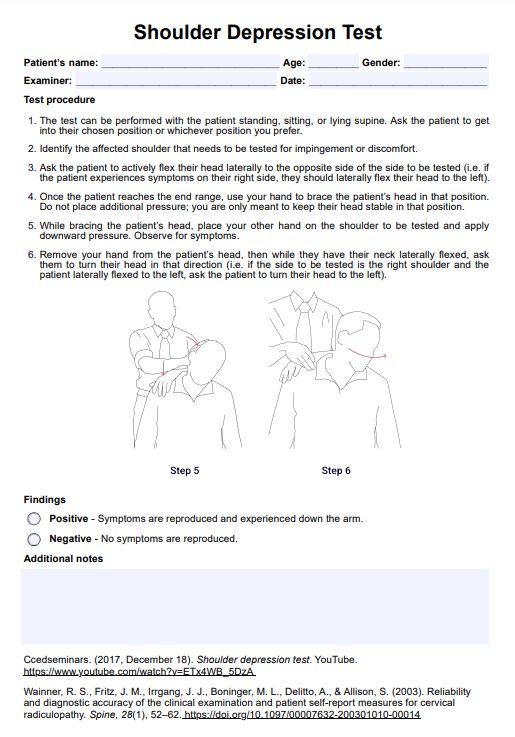Testing for shoulder tendonitis involves physical examinations such as the Hawkins-Kennedy Test, Neer Impingement Test, and Speed’s Test. These tests evaluate pain and mobility to detect inflammation or irritation in the shoulder tendons.

Shoulder Depression Test
Try out our free Shoulder Depression Test template—streamline your cervical radiculopathy assessments and help patients identify their conditions.
Shoulder Depression Test Template
Commonly asked questions
Shoulder depression refers to the downward movement of the shoulder away from the ear, typically caused by applying pressure. This movement stretches nerves and other structures, making it useful in diagnostic tests like the Shoulder Depression Test.
The Hawkins-Kennedy Test evaluates subacromial impingement by flexing the shoulder and elbow to 90 degrees and internally rotating the arm. The Neer Impingement Test involves passively raising the arm while stabilizing the scapula to assess for pain. The Empty Can Test targets the supraspinatus tendon by assessing resistance to downward pressure with the arm abducted and internally rotated.
EHR and practice management software
Get started for free
*No credit card required
Free
$0/usd
Unlimited clients
Telehealth
1GB of storage
Client portal text
Automated billing and online payments











